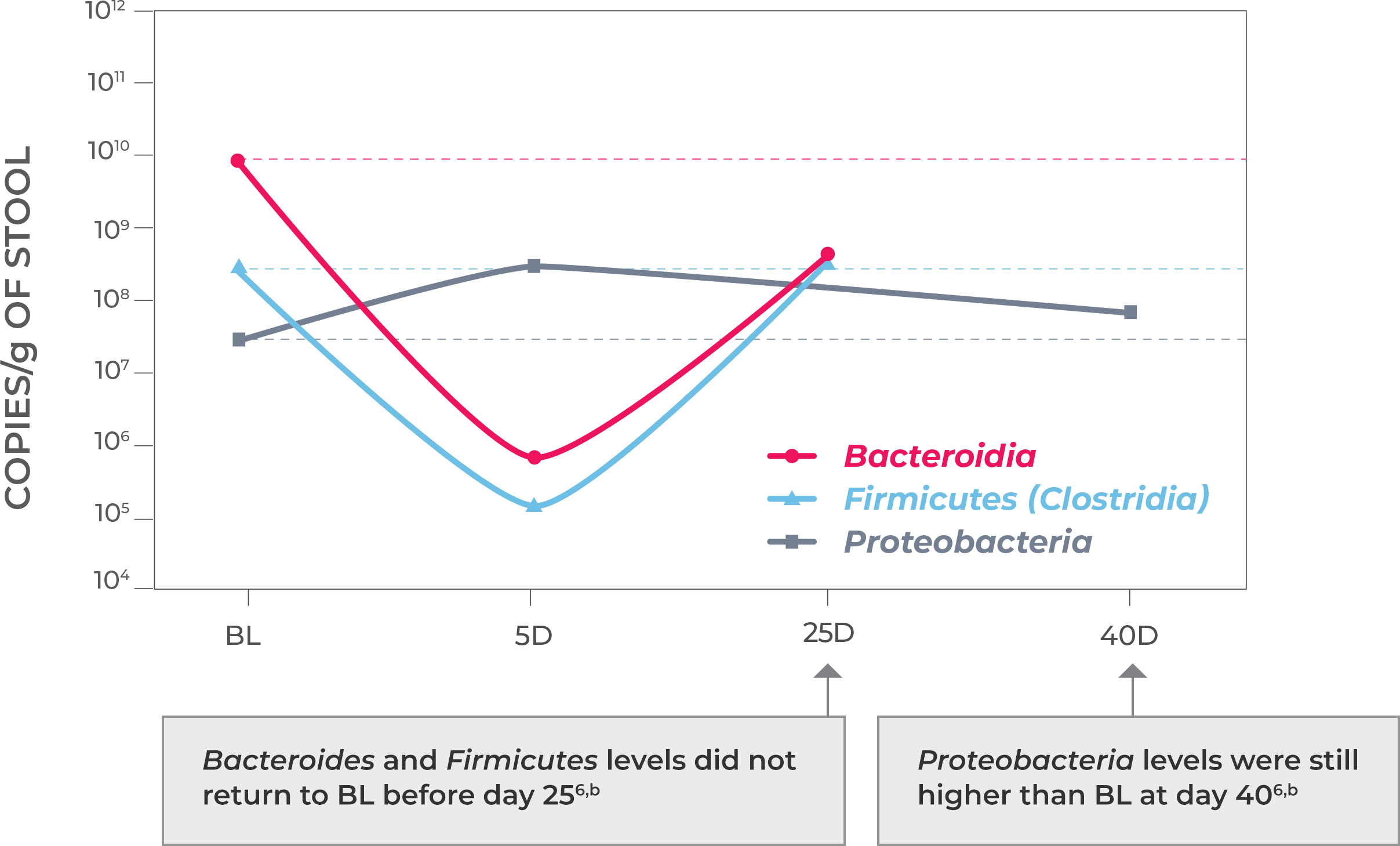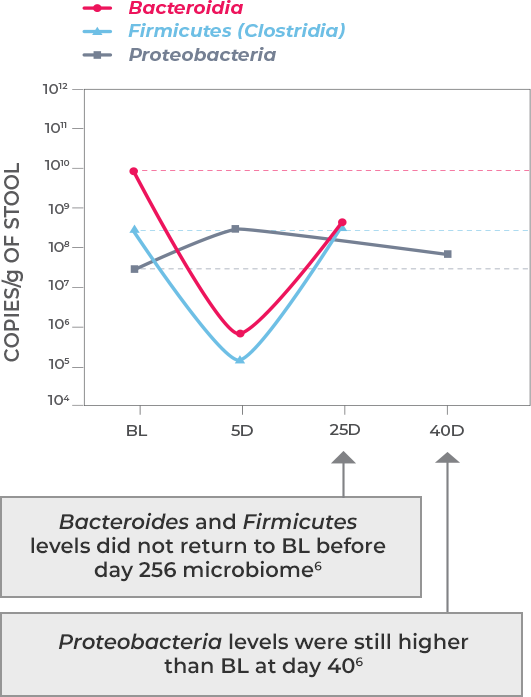
Get the full story of the microbiome
- Importance of Microbial Diversity
- Dysbiosis and Recurrent C. difficile Infection
- Historic Microbiome Restoration Approaches
- Patient and Healthcare Burdens
Currently approved C. difficile infection (CDI) treatments are designed to address the acute infection.
Antibiotic treatment—including vancomycin and fidaxomicin—address the acute infection but do not address (and possibly worsen) dysbiosis or restore the diverse composition of the gut microbiome. This allows a window of vulnerability for recurrence.1-3
Microbiota disruption increases the risk of CDI by providing a niche for C. difficile to flourish. Should antibiotics disrupt the intestinal microbiota, long-lasting effects may result, as well as increased risk of CDI recurrence. Longer exposure to multiple antibiotics and treatment with multiple antibiotics may also increase the risk.4,5


